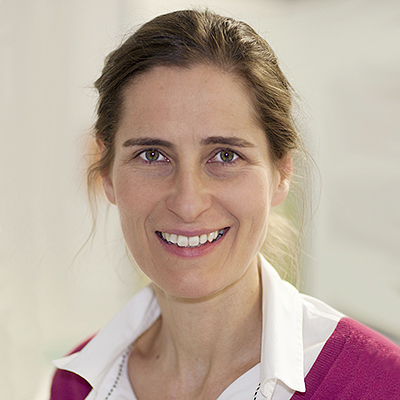“We do research to cure cancer in children and adolescents”

Prof. Rössig, what scientific topic are you working on right now?
We are modifying patients’ immune cells – so-called T cells – in such a way that they recognize cancer cells and destroy them, or at least keep them in check – for a whole lifetime, if possible. After many years of research we have scored our first successes with this strategy in patients with a special form of leukaemia. Researchers and physicians are currently carrying out clinical studies with the modified T cells, also in Germany and at our hospital. At the same time, in our laboratory we are continuing to develop this approach for effectively treating not only leukemias, but also solid tumours. As a paediatric oncologist I work in particular on tumours in bones and soft tissues in children and adolescents, so-called sarcomas. Compared with leukaemias, T cells have much more difficulties to reach these tumour cells. While tumours are growing in size, they surround themselves with healthy cells which they influence in such a way that they support a tumour in its growth and spread. These surrounding cells also disable the immune system to recognize and lyse tumour cells. We are developing strategies that allow T cells to recognize tumour cells more effectively and to overcome barriers in the tumour environment. For this purpose, we have to understand in more detail which mechanisms paralyse and destroy immune cells in childhood cancers.
What characterizes you personally as a scientist?
What motivates me are the daily encounters with cancer-sick children and adolescents. Although we are able to cure many patients, current treatments are very stressful and, not infrequently, leave behind serious long-term effects. And we still can not cure all children and adolescents. This is what motivates the team at our hospital, as well as our research labs, to look for new forms of treatment.
What is your greatest aim as a scientist?
I’d like to see children and adolescents grow up and have healthy lives after our research has helped them to survive a previously incurable cancer. We do our research to cure cancer in children and adolescents.
What’s your favourite toy for research – and what is it able to do?
Just recently we purchased two pieces of equipment which help us to understand mechanisms of immune defence against tumours and to translate this research into clinical applications. One of the instruments semi-automatically produces modified T cells directed against leukaemia cells. The conventional way to produce the cells involved considerable effort by a large number of specially trained staff in high-tech labs. It was too inefficient for any broad application of the cells. The whole process now takes place in a case which is not larger than a printer.
The second piece of equipment, a multicolour imager, can be compared to a special microscope. It allows us to mark the various cell types of which a tumour is composed. With this colour coding we gain a much deeper understanding of how T cells and cancer cells communicate with one another, and how cancer cells defend themselves against attacks by the immune system.
Can you remember your happiest moment as a scientist?
I’m still waiting for the day when our research definitively cures a patient who would not survive with current standard treatment alone.
And what was your biggest frustration?
As a post-doc there was a moment when I thought I would never become a successful scientist. After a year and a half of research I had found a certain protein on the surface of tumour cells. I had reason to believe that this protein was a suitable target for immunotherapy. The precise analysis of what I had assumed was a tumour protein was frustrating: it was a bacterial component. I was a young researcher at the time, and my world just collapsed.
Which scientific phenomenon still regularly fascinates you today?
The efficiency of our immune system fascinates me, especially of the T cells. Only when the immune system stops functioning it becomes apparent how elegantly the body defends itself against intruders. Every day on my ward rounds I see patients who have a severely limited immune function and, as a result, considerable health problems. Some viruses such as Epstein-Barr virus or cytomegalovirus can cause life-threatening infections if the immune function is impaired whereas a healthy immune system effectively protects the body against serious viral infections. I find this very impressive and motivating to continue looking for strategies which enable an effective immune rejection of tumour cells.

